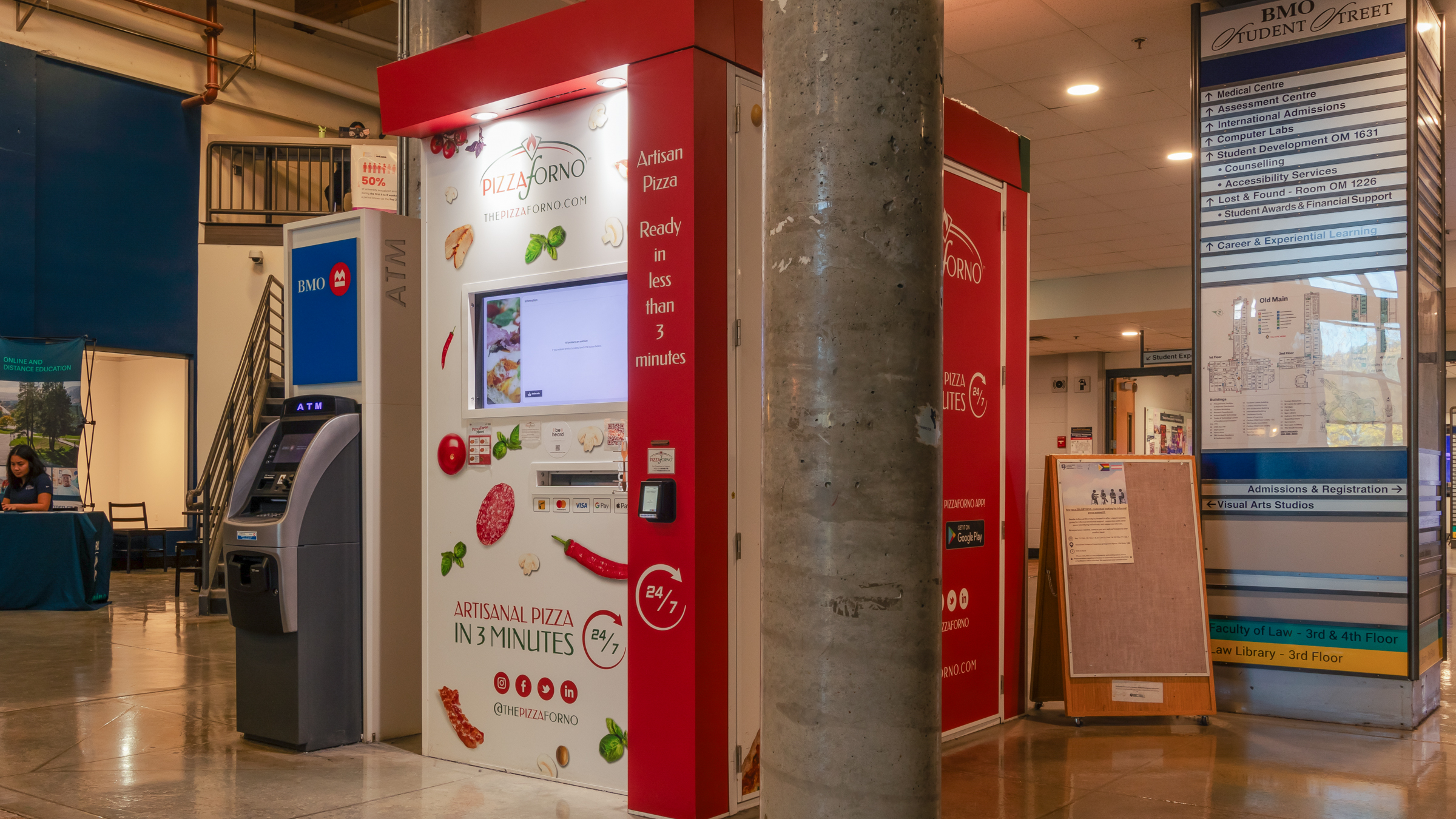The Pizza Conspiracy Instagram account, @pizza.machine.conspiracy, opened just last month and, with only five posts, has gained over 2,000 followers in what feels like the blink of an eye. It’s brought up constantly in conversations around campus, often with the mirth and excitement of a shared inside joke. The account’s claims—that a man is living inside the pizza machine, forced to cook, package and hand out hot slices of pizza to a ravenous university community—is not just absurd, but strangely compelling.
What is it about conspiracies, even the most obviously fake and ironic ones, that draw us in?
Disappointing as it might be, the truth is that @pizza.machine.conspiracy is not original. This past July, a small crowd of protesters appeared at Chicago’s Cloud Gate sculpture, known colloquially as The Bean, to make a similar claim. They insisted there was a man trapped inside the stainless steel monument, that he had been put there as an infant during construction, and that all denials from the municipal office were manipulations from “Big Bean Media”. The protests were accompanied by an Instagram account, @maninbean, dedicated to spreading awareness for the cause.
The pizza machine conspiracy and the Man in Bean hoax have certain similarities. Firstly, both accounts appeared seemingly out of nowhere and received significant attention once their Instagram posts went viral on the platform. Secondly, both put made absurd claims that people rarely appear to take seriously, although their comment sections are filled with people willing to play along. Thirdly, both accounts get their message across with earnest and resolute tones.
Finally, they’re both run anonymously. The Man in Bean Coalition, as they called themselves, refused to reveal any details beyond simple black and white headshots posted on their page, their eyes obscured by dark sunglasses. Similarly, the person/people behind the pizza machine conspiracy remain unknown.
Yet, while both the Cloud Gate and the Pizza machine are recognizable landmarks, the latter is not a work of art that holds any real significance. Nor is the pizza conspiracy (pizzagate?) accompanied by physical protests, which some at the time described as performance art. Our TRU conspiracy is much smaller, at least for now, and relegated, primarily, to our campus.
It is no surprise that the Man in Bean protests began in America this summer, as the nation grapples with rising authoritarianism and a crackdown on democratic freedoms. For the past two years, the States have seen almost nonstop protests over issues ranging from geopolitics to immigration, abortion, trans rights and beyond. It is almost a given that the members of this Man in Bean Coalition had public demonstrations at the forefront of their minds. But there seemed to be a second motivation, an arguably greater need for levity at a time of intense politicization.
In 2017, a similar satirical conspiracy theory, Birds Aren’t Real, was started by another college student at the University of Arkansas. It was a small bit of satire directed towards the early MAGA (Make America Great Again) movement, meant to ridicule the absurdity of many of their political positions. The conspiracy took off. It spread like wildfire across the country, both to people who genuinely believed in it and others who saw it for the joke that it was.
For many young people who came to adulthood in the past 10-15 years, it is easy to see politics as inherently divisive. Considering the global turmoils of democracy, the growth of fascism across the West, and the increasing wealth gap that elected officials everywhere seem uninterested in resolving, it feels to many like the only function politics has had is to keep us apart.
So in an increasingly divided world, there is an appeal in “depoliticizing the political,” in turning political action into a joke. Freeing a man trapped inside a behemoth or demanding the truth about an indentured servant inside a pizza machine both sound like political issues, but are certainly not. This means that instead of politics functioning to divide us, it becomes a unifier. Everyone can agree on saving the trapped people, and if you don’t, it doesn’t really matter anyway. The point is absurdity, that we can all have something to talk to each other about.
This is the function of conspiracies at their roots. They give us purpose and enable us to fulfill it together. Research suggests that a sense of marginalization and the need to address it through community is a key factor driving individuals to adopt conspiracy theories. They make us feel like we’re part of an in-group.
This doesn’t mean conspiracy theories are harmless, or that their benefits outweigh their dangers. Conspiracies may appeal to those who seek certainty, autonomy and community, but there is little evidence to suggest that they actually fulfill those needs. In fact, they might actually act counter-intuitively to them, undermining your needs while lulling you into a false sense of security.
Satirizing a conspiracy theory, then, removes most of the risks from the equation while sustaining the parts that bring people together. As Canada experiences growing political polarization, particularly on college campuses, it’s heartening to have a reason to share a laugh. Coming together to contribute to something, even just a prank, makes us all feel a little less powerless.
In the time since @pizza.machine.conspiracy first went viral, I’ve locked eyes with several people who had been, same as me, staring a little too intently at the pizza machine. I’ve shared with them knowing, mischievous smiles as we walked by each other in the halls. We weren’t looking for any man in the machine, because we knew there wasn’t one. We were looking for each other, for connection. And for those few seconds—when we knew, without having to speak, exactly what was on the other person’s mind—we had it.
The Omega reached out to @pizza.machine.conspiracy for comments but received no response.

